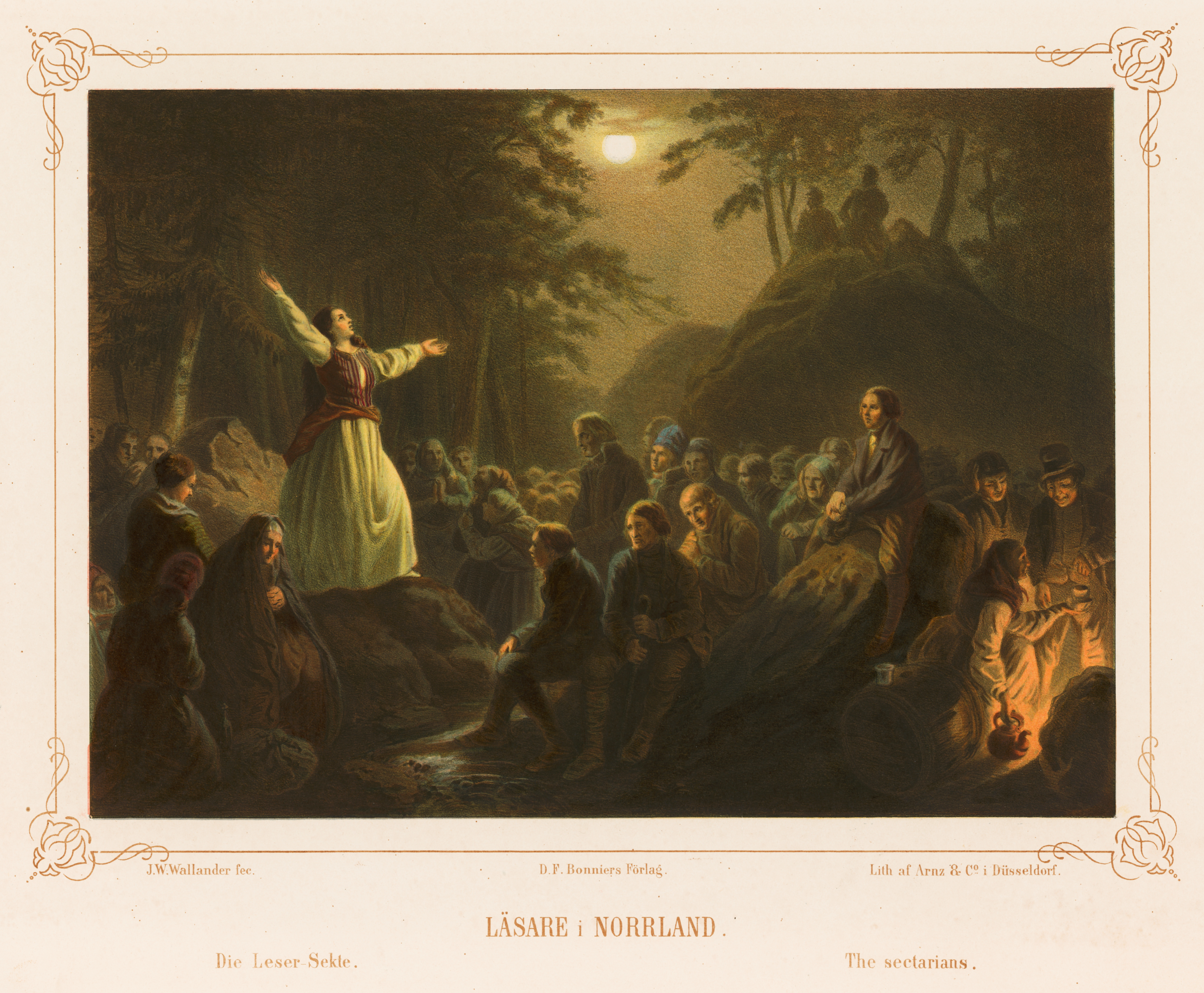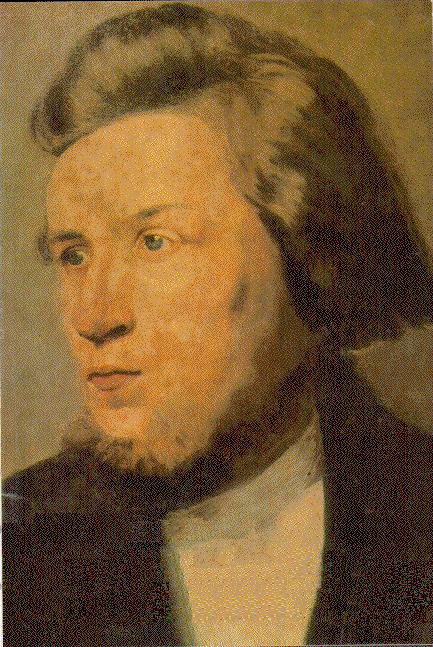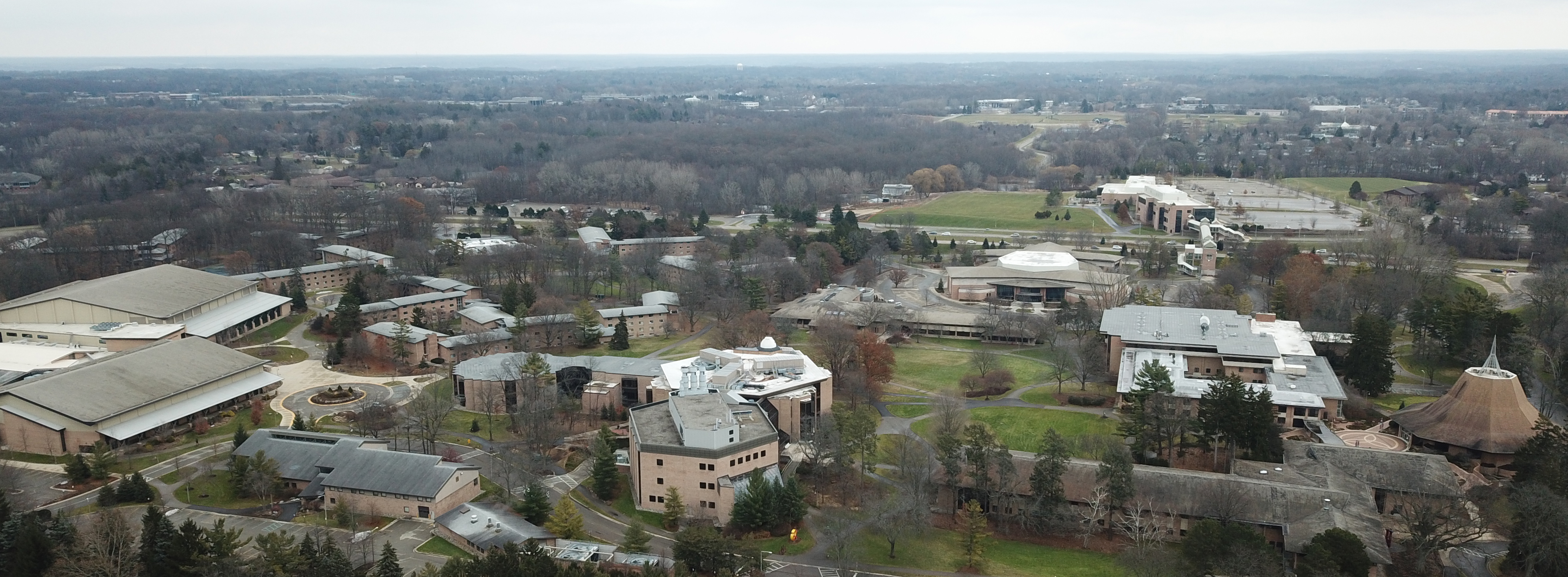|
Nyevangelism
() is a term for a branch of revivalist Protestant Christianity which emerged in Norrland, Sweden, at the beginning of the 19th century. The term, in opposition to Old Pietism (), has been in use since the 1850s. History arose within the Lutheran Church of Sweden but was not limited to it: a free church, Baptist-influenced strand also existed. Danish scholar Finn Rønne notes different views on the movement's origin: it has been argued that it can be traced back to the teachings of strongly Moravian-influenced priest , while others posit it is an outgrowth of Carl Olof Rosenius' beliefs. The movement's beliefs can be somewhat difficult to define precisely. It was often congregationalist in governance with low church aspects where personal commitment is important. It was characterized by independent preachers who traveled from place to place, often preaching somewhat emotionally tinged sermons. The movement's foremost representative was Carl Olof Rosenius, who, in contras ... [...More Info...] [...Related Items...] OR: [Wikipedia] [Google] [Baidu] |
Carl Olof Rosenius
Carl Olof Rosenius (February 3, 1816 – February 24, 1868) was a Swedish lay preacher, author and editor of the monthly ''Pietisten'' (The Pietist) from 1842 to 1868.''Twice-Born Hymns'' by J. Irving Erickson, (Chicago: Covenant Press, 1976) p. 111. He was one of the country's most widely-heard preachers of his day and has been described as being of "extraordinary importance for the low-church evangelical revival not only in Sweden but also in the other Nordic countries". Biography Family and childhood Rosenius was born in Nysätra in Västerbotten while his father, Anders Rosenius, was serving there as a parish pastor. His mother, Sara Margareta Norenius, was the daughter of Olof Norenius, a clergyman. Before Rosenius was born, his mother dreamed that he would be used by God. He was the third child of seven. His six siblings included Eric Andreas – who died as an infant – another brother also named Eric Andreas, Claes Johan, Sara Magdalene, Margareta Eliana, and . Tw ... [...More Info...] [...Related Items...] OR: [Wikipedia] [Google] [Baidu] |
Läsare
(lit. 'reader') or the Reader movement was a Swedish Pietistic Christian revival movement of people who stressed the importance of reading (), that is, reading the Bible and other Christian literature. It was influenced by both the Herrnhuters (Moravian Church) and the Methodists and has been described by scholar George M. Stephenson as a "second religious reformation in Sweden". Term and beliefs There are several spiritual phenomena referred to by the term . It was first used, pejoratively, in the 1750s for Lutherans who sought priests "for whom religion was an inner personal matter" and held individual prayer meetings despite the Conventicle Act banning individual religious gatherings without the leadership of a priest of the Church of Sweden. This ('old reading') was influenced by the literalism of Pietism, especially in the 18th century. Lutheran priest Pehr Brandell was one influential revivalist preacher who grew up in an Old Reader environment. The term also l ... [...More Info...] [...Related Items...] OR: [Wikipedia] [Google] [Baidu] |
Anna Heikel
Anna Charlotta Heikel (2 February 1838 – 3 April 1907) was a Finland-Swedish teacher and director of the School for the Deaf in Jakobstad, Finland, from 1878 to 1898. She was a temperance activist as well as a pioneer of the Baptist movement in Finland and early Sunday school founder. Upbringing and education Heikel was born in Turku, Finland, on 2 February 1838 to Lutheran priest and educator Henrik Heikel. She was one of 11 children, among them gymnastics teacher and educator, Viktor Heikel, and Felix Heikel, a banker and politician. Ethnologist Yngvar Heikel was her nephew. From 1848 to 1853, she attended the Svenska fruntimmersskolan i Åbo, a girls' school in Turku. At 22 years old, Anna Heikel did an internship with the "apostle to the Deaf", Carl Henrik Alopaeus, in Turku. Alopaeus was a bishop and headmaster of the school for the deaf in Turku, and also conducted research on teaching the deaf. They would continue to work together for many years, also later tra ... [...More Info...] [...Related Items...] OR: [Wikipedia] [Google] [Baidu] |
Haugean Movement
The Haugean movement or Haugeanism ( no, haugianere) was a Pietistic state church reform movement intended to bring new life and vitality into the Church of Norway which had been often characterized by formalism and lethargy. The movement emphasized personal diligence, enterprise and frugality. Background The Haugean movement took its name from the lay evangelist Hans Nielsen Hauge (1771–1824). It played an important part in nurturing the democratic folk movement of the time, and stimulating the entrance into politics of representatives of the rural population. It increased tensions between the more privileged classes and the common people, as well as between the clergy and the laity.From revolt to hegemony ''Tysvær Local History Book. Volume 9; Such as They Lived'', Svein Ivar Langhelle, Tysvær ... [...More Info...] [...Related Items...] OR: [Wikipedia] [Google] [Baidu] |
Adolphe Stackelberg
Reinhold ''Adolphe'' Louis Stackelberg (30 June 1822 – 22 January 1871) was a Swedish count ( ''greve''), estate owner, and metalworking plant owner as well as one of the firebrands of the Christian revival movement in Småland. Biography Adolphe Stackelberg was born in 1822 in Hjo, Sweden, to Chief Valet de chambre Count Carl Adolf Ludvig Stackelberg and Eva Sofia Adelswärd and grew up in Almnäs. He was the 14th child in his family. He was born into a noble family, which, however, lacked considerable wealth. He attended Uppsala University, graduating in 1840. Despite his family's lack of wealth, Stackelberg managed to marry Honorée (Honorine), his cousin and the daughter of the very wealthy baron Jan Carl Adelswärd. The wedding took place on 30 August 1847 and Adelswärd gave the couple Stensnäs Manor in Västervik and its estate. In the 1840s Stackelberg experienced a crisis of faith and soon found himself in revivalist Carl Olof Rosenius' ''Nyevangelism'' ('New Eva ... [...More Info...] [...Related Items...] OR: [Wikipedia] [Google] [Baidu] |
Lars Vilhelm Henschen
Lars Vilhelm Henschen (1 June 1805 – 27 January 1885) was a Swedish jurist and politician and involved in the free church movement. He was the father of doctor Salomon Eberhard Henschen, educator Maria Henschen (von Bergen), and publicist , and grandfather of museum curator . Life Upbringing Henschen was the son of priest Wilhelm Peter Henschen and Anna Catharina (Carin) Abelin. He had three brothers, Salomon, Sven, and Peter (Pelle) and two sisters. Their father died in 1816 when Henschen was young. He then went to live with his aunt Beata Abelin and her husband, shipbuilder Lars Daniel af Thunberg. He got along well with the family and their niece, Sofia Sjöborg, described Henschen's life in her writings. Henschen grew up in a religiously and politically active environment. Education, family, and beliefs Having a keen interest in law, he went to Lund in 1820 to study. He completed his degree in 1824, before the age of nineteen. He worked in several different places ... [...More Info...] [...Related Items...] OR: [Wikipedia] [Google] [Baidu] |
Mission Covenant Church Of Sweden
The Mission Covenant Church of Sweden ( sv, Svenska Missionskyrkan), founded in 1878, was a Swedish evangelical free church. It was the second-largest Protestant denomination in Sweden, after the national church, the Church of Sweden. In 2011, the Mission Covenant Church of Sweden completed a merger with two other denominations, resulting in the new denomination Uniting Church in Sweden (in Swedish: Equmeniakyrkan). The denomination is a member of the Swedish Free Church Council, the International Federation of Free Evangelical Churches, and the World Communion of Reformed Churches. History The Mission Covenant Church of Sweden is a breakaway from the Lutheran Church of Sweden. As a movement it had roots in Pietism and the spiritual awakenings of the 19th century such as ''Nyevangelism''. When Swedish Covenanters emigrated to the United States and Canada in the last half of the 19th century, they formed the Evangelical Covenant Church. The denominations are independent of each ... [...More Info...] [...Related Items...] OR: [Wikipedia] [Google] [Baidu] |
Paul Petter Waldenström
Paul Petter Waldenström (alternately spelled "Paul Peter") (20 July 1838 – 14 July 1917) was a Swedish theologian who became the most prominent leader of the free church movement in late 19th century Sweden. Waldenström was born in Luleå in northern Sweden, son of a district physician. He began his academic studies at Uppsala University in 1857, completed his Ph.D. degree there in 1863, and was ordained a priest in 1864. He had been employed as an adjunct in the Växjö högre allmänna läroverk (the secondary school in Växjö) already in 1862 and in 1864, when his doctorate qualified him for this, received a lecturership in Christianity, Greek and Hebrew at the secondary school in Umeå. From 1874 until 1905 he was lecturer in the same subjects at the secondary school in Gävle. He was awarded a Doctor of Theology degree from Yale University in 1889 and was awarded the laurel for a second time as a '' jubeldoktor'' ("jubilee doctor") in Uppsala in 1913. Work in the free ... [...More Info...] [...Related Items...] OR: [Wikipedia] [Google] [Baidu] |
Justification (theology)
In Christian theology, justification is the event or process by which sinners are made or declared to be righteous in the sight of God. The means of justification is an area of significant difference amongst the diverse theories of atonement defended within Roman Catholic, Eastern Orthodox, Oriental Orthodox and Protestant theologies. Justification is often seen as being the theological fault line that divided Roman Catholicism from the Lutheran and Reformed traditions of Protestantism during the Reformation. Broadly speaking, Catholic and Orthodox Christians believe that justification, which in their view initially occurs at Baptism, partaking of the Sacraments and the resulting grace of cooperation with God's will (sanctification) are an organic whole of one act of reconciliation brought to completeness in glorification. In Catholic doctrine, righteousness is infused, i.e., God "pours" grace into one's soul or, "fills" one with his grace more and more over time; faith as ... [...More Info...] [...Related Items...] OR: [Wikipedia] [Google] [Baidu] |
Calvin College
Calvin University, formerly Calvin College, is a private Christian university in Grand Rapids, Michigan. Founded in 1876, Calvin University is an educational institution of the Christian Reformed Church and stands in the Reformed (Calvinist) tradition. Known as Calvin College for most of its history, the school is named after John Calvin, the 16th-century Protestant Reformer. History The Christian Reformed Church in North America founded the school on August 4, 1876, as part of ''Calvin College and Theological Seminary'' (with the seminary becoming Calvin Theological Seminary) to train church ministers. The college and seminary began with seven students, in a rented upper room on Spring Street, in Grand Rapids, Michigan. The initial six-year curriculum included four years of literary studies and two years of theology. In 1892, the campus moved to the intersection of Madison Avenue and Franklin Street (Fifth Avenue) in Grand Rapids. In September 1894, the school expanded the c ... [...More Info...] [...Related Items...] OR: [Wikipedia] [Google] [Baidu] |
Bornholm
Bornholm () is a Danish island in the Baltic Sea, to the east of the rest of Denmark, south of Sweden, northeast of Germany and north of Poland. Strategically located, Bornholm has been fought over for centuries. It has usually been ruled by Denmark, but also by Sweden and by Lübeck. The ruin of Hammershus, at the northwestern tip of the island, is the largest medieval fortress in northern Europe, testament to the importance of its location. Bornholm and Ertholmene comprise the last remaining Danish territory in Skåneland east of Øresund, having been surrendered to Sweden in 1658, but regained by Denmark in 1660 after a local revolt. The island is known as ("sunshine island") because of its weather and ("rock island") because of its geology, which consists of granite, except along the southern coast. The heat from the summer is stored in the rock formations and the weather is quite warm until October. As a result of the climate, a local variety of the common fig, known ... [...More Info...] [...Related Items...] OR: [Wikipedia] [Google] [Baidu] |
Pietisten
("The Pietist") was a Swedish Christian monthly publication "for religious revival and edification", founded in January 1842 by the Scottish Methodist minister George Scott, who had immigrated to Sweden, and edited by preacher Carl Olof Rosenius until his death in 1868, after which the editorship was taken over by Paul Peter Waldenström. In the last years, the editorial staff included Janne Nyrén (1914–1915), Johan Peter Norberg (from 1916), Theodor Andersson (from 1917) and Jakob Emanuel Lundahl (1918). Around 10,000 copies of the journal were published between 1853 and 1865. The journal was for the Mission Friends but was spread widely: selections were copied, translated, and published freely at the time. A Finland-Swedish version entitled ('The Evangelical Messenger') was also published. The word ''pietist'', from the Latin word , meaning 'piety, godliness', refers to the Pietist movement. During Rosenius' editorship, the magazine was essentially written by him, and w ... [...More Info...] [...Related Items...] OR: [Wikipedia] [Google] [Baidu] |






